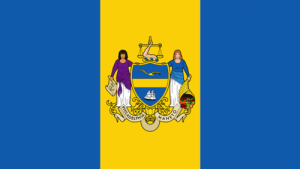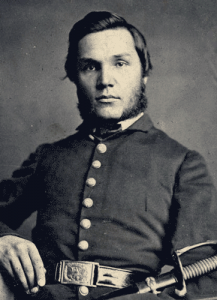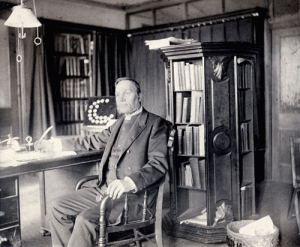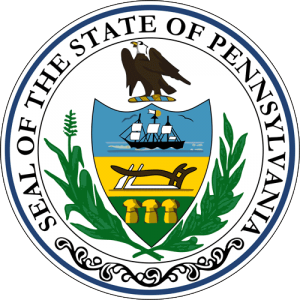Philly flag flies and flaps

When members of the Democratic Party gather in the City of Brotherly Love for their quadrennial convention to nominate a presidential candidate, they will see American flags all around the venue. Those with sharp eyes might also spot Philadelphia’s city flag.
The banner was conceived in 1894 by a learned expert with eclectic interests that included Scripture, spiders and document seals. Rev. Dr. Henry Christopher McCook, who led Tabernacle Presbyterian Church in the city, was a man of great learning, an avid collector of historiana, and a military chaplain during both the Civil War and the Spanish-American War.

He also lobbied city hall for a flag that would salute Philly. A newspaper reported that the minister “made a vigorous address [to a committee of the City Council] in advocacy” of creating a flag. Citing historic precedence, he argued that doing so would be “in accordance with the ancient custom of independent municipalities” having “an authorized flag.”
Continuing, McCook said, “A civic flag is calculated to inspire a spirit of civic loyalty,…precisely as similar use of the National Flag tends to foster a spirit of national loyalty.”

Volunteering his talents and expertise to make a flag, the minister said he was compelled “by a desire to do my duty as a citizen and…to deepen in the hearts of my fellow citizens’ pride and love for a city which…has been my adopted home.”
Once he was given the go-ahead, the reverend created a city flag divided into three vertical bars colored blue, yellow and blue again. In the center of the banner lies the city’s arms from its municipal seal. It shows two women who represent peace and plenty. Also decorating the banner are a scale of justice, a plow and a sailing ship.

McCook knew a lot about official seals and coats of arms. The Philadelphia Inquirer credited him with having “what is probably the most extensive collection [of seals] in the world.” Among his collection, for instance, were the seals of every state in the Union. Pennsylvania, of course, was among them.
But the Philadelphia municipal flag might be his piece de resistance. The Inquirer called it “a beautiful banner” that was “the result of Dr. McCook’s fertile brain.”

Formally adopted in 1895, the city flag also contains a Latin slogan, “Philadelphia Maneto,” meaning “Let brotherly love continue.”
That sentiment might be displayed at the political convention, but it’s doubtful the amity will continue on either side during the campaign season that leads to November’s presidential election.
